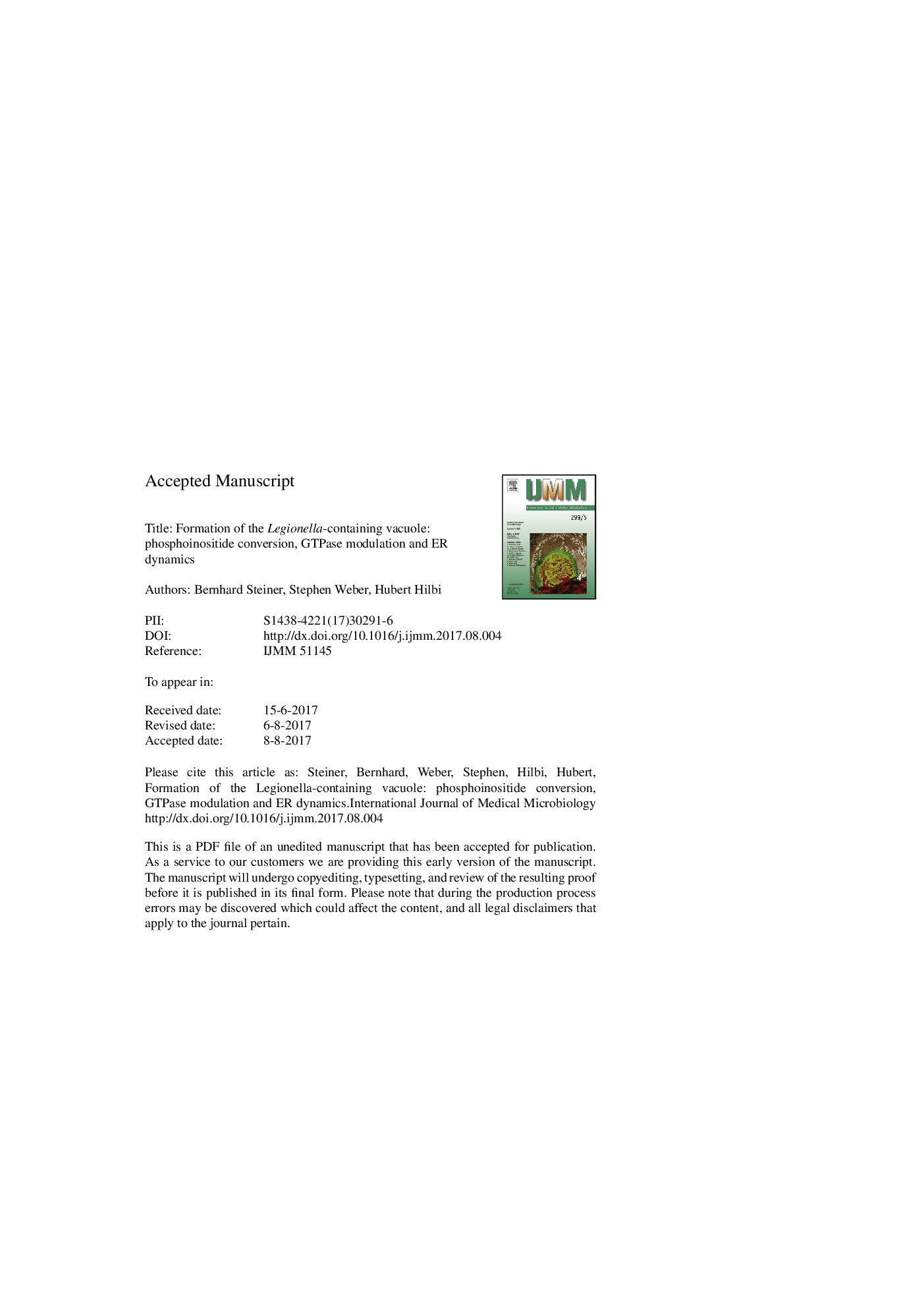| کد مقاله | کد نشریه | سال انتشار | مقاله انگلیسی | نسخه تمام متن |
|---|---|---|---|---|
| 8384989 | 1543667 | 2018 | 37 صفحه PDF | دانلود رایگان |
عنوان انگلیسی مقاله ISI
Formation of the Legionella-containing vacuole: phosphoinositide conversion, GTPase modulation and ER dynamics
دانلود مقاله + سفارش ترجمه
دانلود مقاله ISI انگلیسی
رایگان برای ایرانیان
کلمات کلیدی
LCVPtdInsT4SSDictyostelium discoideumGTPaseAmoeba - آمیباIntracellular bacteria - باکتری های داخل سلولیType IV secretion - ترشح نوع IVHost-pathogen interaction - تعامل میزبان-پاتوژنType IV secretion system - سیستم ترشحی نوع IVendoplasmic reticulum - شبکه آندوپلاسمی phosphatidylinositol - فسفاتیدیل اینوزیتولPhosphoinositide - فسفوئوزیتیدVesicle trafficking - قاچاق ویسیکلLegionella - لژیونلاMacrophage - ماکروفاژ Effector protein - پروتئین اکترون
موضوعات مرتبط
علوم زیستی و بیوفناوری
بیوشیمی، ژنتیک و زیست شناسی مولکولی
بیوشیمی، ژنتیک و زیست شناسی مولکولی (عمومی)
پیش نمایش صفحه اول مقاله

چکیده انگلیسی
The environmental bacterium Legionella pneumophila replicates in free-living amoeba as well as in alveolar macrophages upon inhalation of bacteria-laden aerosols. Resistance of the opportunistic pathogen to macrophages is a prerequisite to cause a severe pneumonia called Legionnaires' disease. L. pneumophila grows intracellularly in a unique, ER-associated compartment, the Legionella-containing vacuole (LCV). The bacterial Icm/Dot type IV secretion system represents an essential virulence factor, which translocates approximately 300 “effector proteins” into protozoan or mammalian host cells. Some of these effectors contribute to the formation of the LCV by targeting conserved host factors implicated in membrane dynamics, such as phosphoinositide lipids and small GTPases. Here we review recent findings on the role of phosphoinositides, small and large GTPases as well as ER dynamics for pathogen vacuole formation and intracellular replication of L. pneumophila.
ناشر
Database: Elsevier - ScienceDirect (ساینس دایرکت)
Journal: International Journal of Medical Microbiology - Volume 308, Issue 1, January 2018, Pages 49-57
Journal: International Journal of Medical Microbiology - Volume 308, Issue 1, January 2018, Pages 49-57
نویسندگان
Bernhard Steiner, Stephen Weber, Hubert Hilbi,